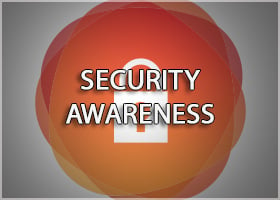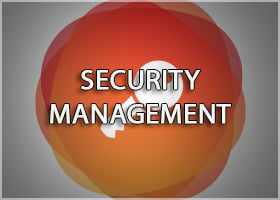 Security management is the development, implementation, and documentation of procedures and policies for protecting an organization’s assets, such as information, equipment, systems, property, and personnel.
Security management is the development, implementation, and documentation of procedures and policies for protecting an organization’s assets, such as information, equipment, systems, property, and personnel.
In the earliest days of security management, protecting data assets was as simple as building a firewall around your network. Now technology is woven into the fabric of our everyday lives. For companies, this means their data boundaries have become mutable and more difficult to protect.
With the shift toward BYOD, wearables, and IoT in the workplace, security managers have to strike a delicate balance between data protection and legitimate access for users. While there is no silver bullet of protection for your data, you can ensure the best possible security with a comprehensive management approach.
In this article, we’ll look at two foundational aspects of security management: security awareness and best practices.
Why Security Awareness Matters
Phishing scams have continued to rank at the top of threat potentials because they are effective. As humans, we’re error-prone and, therefore, a weak link in the security chain.
IT security professionals understand the risks of phishing scams. According to a cybersecurity article published by CSO, over half (56%) of IT decision-makers list targeted phishing attacks as their top security threat.
Since phishing scams require a user to open or click something, such as an email, file, or link, security awareness training is the best defense your company has against these kinds of threats.
Training Best Practices
It’s a good idea to run phishing simulations and test users’ awareness levels. You can use the data you gather to create very targeted and specific training to address awareness gaps.
Make sure to run training sessions at regular intervals and institute a training program for new hires. Document training program policies and procedures. Revise on a regular basis to reflect changes in the threat environment, internal security policies, and awareness levels.
Security Management Best Practices
The goal of security management is to find the right spot on the continuum of risk and reward. For each company, that spot will be in a different place. Where that is for your company is determined by your tolerance for risk and your business needs, such as agility, speed, or user experience.
Security Management 101
 It helps to think of security management as a live, iterative process. Here is a high-level overview of the basic steps.
It helps to think of security management as a live, iterative process. Here is a high-level overview of the basic steps.
- Discover which assets need protection.
- Devise a strategy for protecting them.
- Test the strategy at regular intervals.
- Improve security management with data gathered through the testing process.
Stay agile. In other words, be ready to change your security policies whenever you detect changes in the surrounding risk environment.
Here are the best practices we recommend for security management and awareness:
Employee Education: Cybersecurity Awareness Training Program
Employees are the primary gatekeepers of security in your organization. Support their efforts with education, new employee and refresher training, and updates to address new and emerging threats. The threat landscape is shifting — and shifting faster all the time. To remain effective over time, your cybersecurity awareness program will need to evolve.
Phishing Simulations
These will help you gauge your employees’ security awareness levels. Use the intelligence you gather to design targeted training programs to address gaps in awareness.
Use simulations as part of your training program to give users hands-on experience with phishing scams. These will help them recognize the warning signs and raise their awareness levels.
File and User Activity Monitoring
Threats from inside and out are evolving and changing at an ever-faster rate. Hackers are using adversarial AIs, such as GANs (generative adversarial networks) to crack defenders’ algorithms. Hackers have also been known to poison AI training sets to create errors and misdirection.
To stay ahead of emergent threats, it’s a good practice to monitor both file and user activity. Set a baseline of normal activity and watch for deviations.
Authentication
User access is a risk area. Passwords that are stolen or cracked by hackers can be used to infiltrate restricted areas. Many companies are vulnerable because they lack sufficient policies and procedures to meet today’s threat levels. This results in issues passwords that are insecure, too easy to guess, or changed too infrequently.
Current Best Practices
A good first defense is a strong authentication policy. We recommend multifactor authentication (MFA) and single sign-on (SSO).
Multifactor Authentication
Multifactor authentication (MFA) is a security system that requires more than one method of authentication from independent categories of credentials to verify the user's identity for a login or other transaction.
Single Sign-on
One of the great benefits of single sign-on (SSO) is the user experience. It gives users access to multiple applications with a single login.
Audit Access
Audits help you establish a baseline for detecting any unauthorized use of your network, applications, or data. Regular access audits will reduce your exposure to cyberattacks and insider threats.
By removing old, unused accounts and enforcing good security policies, including frequent password updates, multifactor authentication, or single sign-on, you can reduce and minimize your authentication-based security risks.
Companies often seek support from security service providers to put distance between themselves and their security risk. Service providers can stand in the gap between enterprises and security risk factors.
Through their relationship with providers, organizations gain access to security specialists who dedicate themselves to understanding current best practices and compliance requirements. Additionally, security providers are able to invest in the latest threat mitigation technology and leverage their economy of scale to offer high-quality security services at an affordable price point.
Learn more about Solutions II Security Services.




Comment Form